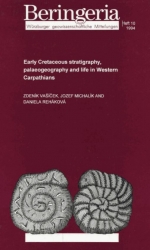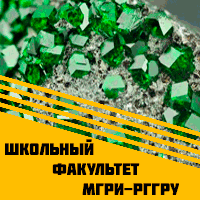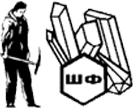Добрый день, Коллеги. Важное сообщение, просьба принять участие. Музей Ферсмана ищет помощь для реставрационных работ в помещении. Подробности по ссылке
Early Cretaceous stratigraphy, palaeogeography and life in Western Carpathians / Стратиграфия нижнего мела, палеогеография и жизнь в Западных Карпатах
Submitled work summarizes the results of lithological, lithostratigraphic, sedimentological, bioslratigraphic, palaeobiological and palaeobiogeographic studies of the uppermost Jurassi~Lower Cretaceous sequences of the Outer and Cenlral Western Carpatluans, forming a part of the Slovakian, (and also of the Polish) territory. Attention is paid to systematic evaluation of stratigraphically important groups of fossils, represented mainly by ccphalopods (ammonites, aptychi, as wcll as belemnites) of which 79 species and subspecies are described in the chapter on taxonomy. The new taxa are Olmellaprychusfilicostatus fmctocostatus and L. aplanatus lam. Thc Carpathian cephalopod zonation has been checked and/or complemented by calpionellid parabioslratigraphy, which is thc most uselid additional tool for subdivimng the uppermost Jurassic-early Lower Cretaceous deposits, where cephalopods are mc. The biostratigraphic zonation based on calcareous dinonagellates, mdiolarians, nannoplankton and plankto~cfo raminifers, may xrvc as an additional tool for more precise dating of the pelagic sequences. On the other hand, the distribution of algae, benthic foraminifers, to some extent also of brachiopods and crinoids, contributes to the dating of shallow carbonate platform deposits. Despilc occasional Early Valanginian-Late Hauterivian immigration of Boreal ammonites, the Western Carpathians belonged to the Mediterranean faunal provincc during the Lower Cretaceous. The periodic connection between the Mediterranean and the Boreal-Realm was intempted during Barremian times. The majority of early Lower Crekceous sequences is vsented by the swcalled Neocomian facies. Elevations produced by Late IIauterivian and Barremian tensional stress are characterized by organogenous "Urgonian" limestone, that is carbonate platform sediments, whilc argillaceous deposits similar to black shales prevailed in rifted basins. Carbonate platform sedimentation ceased during the M~ddlcA lbian "collapse" of the area. Later on, pelagic shales passing upwards into flysch dcposits prevailed in all basins. <...>




